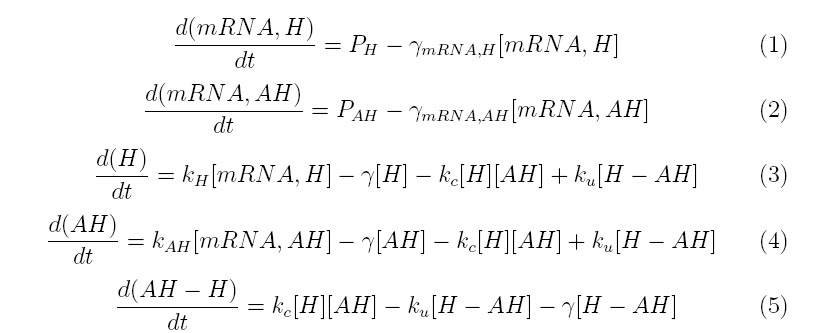Team:UC Berkeley/Modeling
From 2008.igem.org
ChrisBrown (Talk | contribs) |
ChrisBrown (Talk | contribs) |
||
| Line 4: | Line 4: | ||
| - | [[Image: | + | [[Image:equation1.png]] |
Revision as of 00:58, 25 October 2008
The kinetics of the Lambda phage lysis device was modeled to help our team gain an insight into the behavior of our system. The below equations describe our system
Where P1 and P2 approximate the mRNA promoter strength and mH and mH are the degradation rates for holin and antiholin respectively. kH , kAH and kc represent the rate constants for holin and antiholin formation and the coupling rate for the holin-antiholin dimer.
The literature indicates that at the time of lysis, cells infected with lambda phage have approximately 1000 holin proteins. Therefore, the critical concentration of holin (Hc) was set at 1000 holin proteins per cell.
At steady state, <math> {d[~]}{dt}=0 </math>
The above equations were set equal to zero. The system was simplified into three dimensionless numbers
H = k HPH AH = k AHPAH = ku+ mH mAH kc
and the following transfer function,
[H] – (H – AH + )[H] – H = 0
Using MatLab, graphs of the system were produced
 "
"



